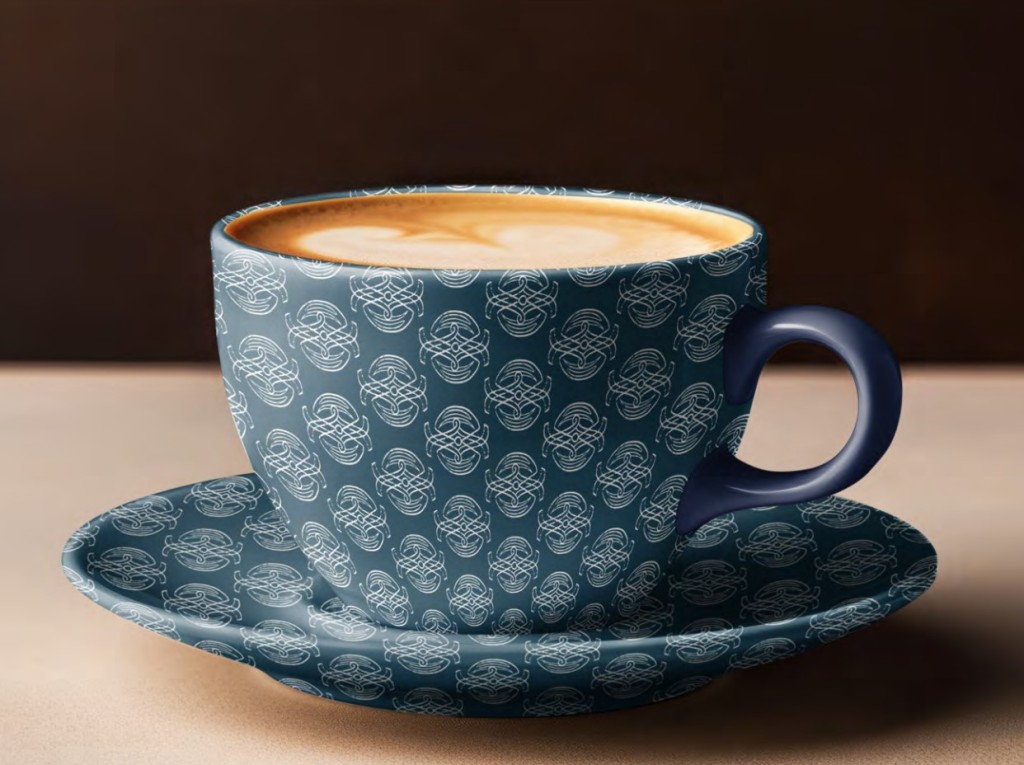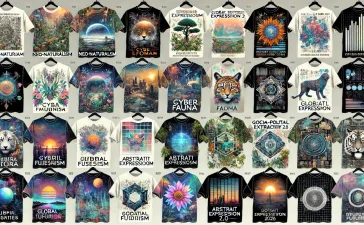In the competitive world of art licensing, having a strong portfolio is critical, but there’s one tool that can elevate your presentation and help you stand out: mockups. These visual representations of your artwork on various products allow potential clients to visualize how your designs will look in real-world applications. Mockups are your best friends when it comes to licensing submissions because they help convey your creative vision, making it easier for manufacturers and retailers to see the potential of your designs. They are essential for demonstrating how your artwork can seamlessly integrate with products and resonate with consumers.
This article will explore two key types of mockups: product mockups and lifestyle mockups. We’ll also discuss why they are invaluable for artists looking to commercialize their work and establish a foothold in the art licensing world.
Why Mockups Matter in Art Licensing
When you submit your designs for licensing, especially in the competitive fields of surface design, fashion, home décor, or greeting cards, it’s essential to go beyond a simple design file. Art directors, product developers, and buyers often need more than just flat images—they want to see how your art will look on their products. This is where mockups come in. They provide a polished, professional, and realistic presentation that makes it easier for decision-makers to imagine your artwork in action.
Here’s why mockups are essential:
- Visual Storytelling: Mockups help tell the story of how your designs can be used. Instead of asking a client to imagine how your artwork might look on a coffee mug, pillow, or t-shirt, you can show them exactly what it will look like. This visual storytelling can create an emotional connection between the viewer and your artwork.
- Professional Presentation: A well-executed mockup elevates your submission, making your work look more professional and thought-out. It shows clients that you understand their needs and can provide them with ready-to-use solutions.
- Increased Engagement: Clients are more likely to engage with designs they can visualize on products they sell. Mockups help your artwork resonate with buyers by showing how your art can be applied practically and aesthetically.
The Two Types of Mockups You Need
There are two main types of mockups that you should include in your licensing submissions: product mockups and lifestyle mockups. Each serves a unique purpose, but together, they provide a comprehensive view of how your artwork can be used.
Product Mockup: Coffe Cup & Saucer from Coastal Chill Collection by Leisa O’Brien
1. Product Mockups: Focused and Specific
Product mockups are straightforward—they showcase your artwork on a specific item, such as a coffee mug, t-shirt, or greeting card. These are incredibly important for showing potential clients exactly how your design will look on the products they manufacture or sell. Product mockups are about precision and detail. They give clients a clear and focused view of how your design fits into the context of a single item.
For example, if you’re a surface designer submitting artwork for kitchen products, your product mockups might include your designs applied to tea towels, cutting boards, or ceramic mugs. If you’re submitting to a greeting card company, your mockups might show how your artwork looks on the front of a card, perhaps with added textures or foiling effects.
Product mockups help clients focus on the specifics, showing exactly how your art will look on an individual item. They’re often used when a client is looking for particular products and wants to see immediate, clear results.
Why Product Mockups Work:
- Clarity: They focus on one product, giving a clear, concise representation of your design.
- Application: They show your understanding of the product’s shape, size, and material, and how your design complements it.
- Industry Standard: Clients expect to see these in their submissions, making them essential for professional pitches.
Lifestyle Mockup – Riviera Collection by Valerie Khoo Design
2. Lifestyle Mockups: The Power of Storytelling
While product mockups focus on a single item, lifestyle mockups tell a broader story by showing how your designs fit into a real-life setting. These mockups are perfect for conveying mood, atmosphere, and how your collections look when used or worn in everyday life. Lifestyle mockups help you create an emotional connection with potential buyers by showing your designs in context—just like you would find in a glossy interior design magazine.
For example, if you’ve created a fabric collection with patterns, a lifestyle mockup might show your designs on cushions or curtains in a beautifully styled living room. If you’ve designed surface patterns for apparel, you could use a lifestyle mockup to showcase your artwork on clothing being worn in a fashion-forward environment.
Lifestyle mockups resonate because they help potential clients and consumers imagine how your designs will look in their homes, wardrobes, or lives. These types of mockups are all about aspiration and storytelling, which can be powerful motivators in the buying decision.
Why Lifestyle Mockups Work:
- Emotional Appeal: They help clients envision the real-life applications of your designs, fostering a personal connection.
- Holistic View: They allow clients to see how your designs work together as a cohesive collection rather than just as individual pieces.
- Marketing Appeal: Lifestyle mockups often resemble high-end marketing materials, making your work look more desirable and saleable.
How to Use Mockups in Licensing Submissions
When submitting your designs for licensing, incorporating a mix of both product and lifestyle mockups will give clients the most comprehensive view of your work. Here’s how you can make the most of mockups in your submissions:
- Tailor Your Mockups to the Client: If you’re submitting designs to a company that specializes in home décor, use mockups that show your designs on products they’re likely to manufacture, such as pillows, throws, or wall art. For a fashion company, show your designs on apparel or accessories.
- Show a Range: Use product mockups to highlight individual designs on specific items, but don’t forget to use lifestyle mockups to show how your entire collection works together. This will give clients a holistic view of your work and help them envision how your designs can enhance their product line.
- Quality Matters: Ensure your mockups are high-quality and professional. There are many mockup templates available, but it’s important to customize them to reflect your design aesthetic.
- Tell a Story: Use lifestyle mockups to convey the story behind your collection. Whether it’s creating a cozy living room with your textile designs or showing off a fashionable outfit with your patterns, storytelling can help your designs resonate more deeply with clients.
Conclusion
Mockups are an indispensable tool for artists looking to succeed in art licensing. Product mockups provide clarity and precision, while lifestyle mockups tell a compelling story that connects emotionally with clients. By using both in your submissions, you can present your designs in the best possible light, increasing your chances of success in the licensing world. So, embrace mockups—they truly are your best friends in showcasing the potential of your art.
- Find out more
- Launch Pad + Accelerator Expressions of Interest
- Selling and Licensing Your Art & Designs Around the World with ArtSHINE.
- Looking for exciting new Art and Designs to license.
We’re here to help you to take action, just like we’ve helped thousands of other entrepreneurs, business owners, and creative professionals all around the globe.
Now is the time to let your passion SHINE.
Now is the time to Make Tomorrow Today!
To your success, Vinh Van Lam and Stuart Horrex Cofounders ArtSHINE.com







